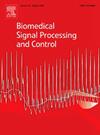Pixel attention meets M-shaped networks: A cutting-edge AI solution for diabetic retinopathy classification and stroke risk prediction
IF 4.9
2区 医学
Q1 ENGINEERING, BIOMEDICAL
引用次数: 0
Abstract
Visual impairment is a major global health concern, with Diabetic Retinopathy (DR) recognized as a leading cause of vision loss and blindness among individuals with diabetes. Despite its widespread occurrence, the early detection of DR poses significant challenges due to the subtlety of initial symptoms, the requirement for expert analysis of retinal images, and the drawbacks of traditional diagnostic techniques, which can be time-consuming, subjective, and susceptible to human error. DR impacts the retina and the ocular blood vessels, making timely and accurate diagnosis crucial to prevent irreversible damage. However, recent advancements in Artificial Intelligence (AI) have opened up new avenues in medical diagnostics, offering sophisticated approaches for the detection and classification of DR with impressive accuracy. This article introduces a Pixel Attention-based M−Shaped Architecture (PAM), an innovative AI-powered diagnostic tool designed to enhance the detection and classification of DR. The PAM system consists of two key components: 1) a Pixel Attention (PIAT) network that aids in the precise identification of abnormalities in retinal blood vessels, and 2) an M−shaped neural network architecture that delivers strong segmentation and classification capabilities. Trained and validated on three diverse benchmark datasets with over 35,000 fundus images spanning multiple DR severity levels, PAM exhibits exceptional adaptability across different levels of DR severity (mild, moderate, severe, and proliferative), achieving state-of-the-art results with an accuracy of 98.73%, precision of 98.82%, sensitivity of 98.67%, specificity of 98.72%, F1-score of 99.13%, and a Dice coefficient of 98.74%. Comparative studies demonstrate that PAM outperforms current methodologies, especially in terms of accuracy and F1-score. Its key advantage is its ability to offer healthcare professionals a scalable, efficient, and dependable resource for improving clinical decision-making. Moreover, by focusing on pixel-level vascular pathology, PAM can simultaneously yield insights into systemic microvascular health, specifically functioning as an early-warning tool for stroke risk. This dual-purpose utility positions PAM as a powerful asset for telemedicine, broad screening programs, and AI-enhanced healthcare systems, where a single retinal exam can address both ocular and cerebrovascular health. By enabling timely and accurate diagnosis of DR and proactively recognizing individuals at elevated risk for stroke, PAM can significantly reduce vision loss associated with diabetes and aid in stroke prevention. This approach effectively connects advancements in AI with the clinical requirements of ophthalmology and neurology. Current efforts involve implementing PAM on mobile devices and performing external clinical validations to confirm its applicability in real-world settings and its impact across multiple domains.
像素关注与m形网络:用于糖尿病视网膜病变分类和中风风险预测的尖端人工智能解决方案
视力损害是一个主要的全球健康问题,糖尿病视网膜病变(DR)被认为是糖尿病患者视力丧失和失明的主要原因。尽管其广泛发生,但由于初始症状的微妙性,对视网膜图像的专家分析的要求以及传统诊断技术的缺点,DR的早期检测带来了重大挑战,这些诊断技术可能耗时,主观且容易受到人为错误的影响。DR影响视网膜和眼部血管,及时准确的诊断对于防止不可逆损伤至关重要。然而,人工智能(AI)的最新进展为医疗诊断开辟了新的途径,为DR的检测和分类提供了复杂的方法,其准确性令人印象深刻。本文介绍了一种基于像素注意力的M形架构(PAM),这是一种创新的人工智能诊断工具,旨在增强dr的检测和分类。PAM系统由两个关键组件组成:1)有助于精确识别视网膜血管异常的像素注意力(PIAT)网络,以及2)提供强大分割和分类能力的M形神经网络架构。PAM在三个不同的基准数据集上进行了训练和验证,其中包含超过35,000张眼底图像,跨越多个DR严重程度,PAM在不同程度的DR严重程度(轻度、中度、重度和增殖性)中表现出出色的适应性,获得了最先进的结果,准确度为98.73%,精度为98.82%,灵敏度为98.67%,特异性为98.72%,f1评分为99.13%,Dice系数为98.74%。比较研究表明,PAM优于当前的方法,特别是在准确性和f1分数方面。它的主要优势是能够为医疗保健专业人员提供可扩展、高效和可靠的资源,以改进临床决策。此外,通过关注像素级血管病理,PAM可以同时对系统微血管健康产生深入的了解,特别是作为中风风险的早期预警工具。这种双重用途的实用程序使PAM成为远程医疗、广泛筛查计划和人工智能增强的医疗系统的强大资产,在这些系统中,一次视网膜检查可以同时解决眼和脑血管健康问题。通过及时准确地诊断DR,并主动识别卒中高危人群,PAM可以显著减少糖尿病相关的视力丧失,并有助于卒中预防。这种方法有效地将人工智能的进步与眼科和神经病学的临床需求联系起来。目前的工作包括在移动设备上实施PAM,并执行外部临床验证,以确认其在现实环境中的适用性及其跨多个领域的影响。
本文章由计算机程序翻译,如有差异,请以英文原文为准。
求助全文
约1分钟内获得全文
求助全文
来源期刊

Biomedical Signal Processing and Control
工程技术-工程:生物医学
CiteScore
9.80
自引率
13.70%
发文量
822
审稿时长
4 months
期刊介绍:
Biomedical Signal Processing and Control aims to provide a cross-disciplinary international forum for the interchange of information on research in the measurement and analysis of signals and images in clinical medicine and the biological sciences. Emphasis is placed on contributions dealing with the practical, applications-led research on the use of methods and devices in clinical diagnosis, patient monitoring and management.
Biomedical Signal Processing and Control reflects the main areas in which these methods are being used and developed at the interface of both engineering and clinical science. The scope of the journal is defined to include relevant review papers, technical notes, short communications and letters. Tutorial papers and special issues will also be published.
 求助内容:
求助内容: 应助结果提醒方式:
应助结果提醒方式:


